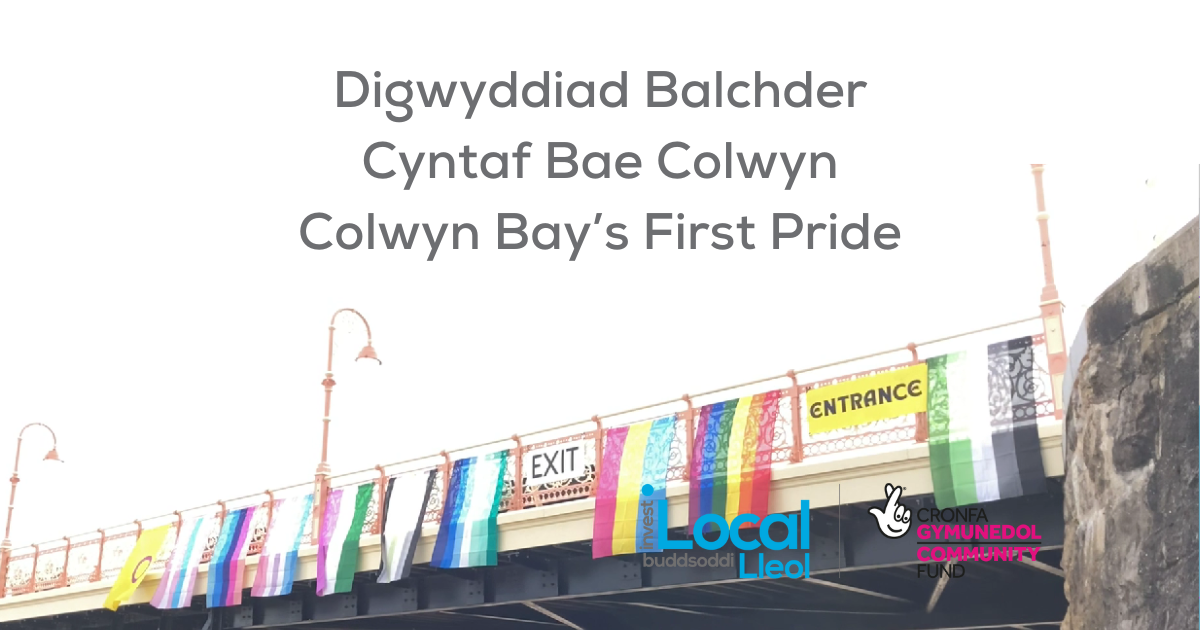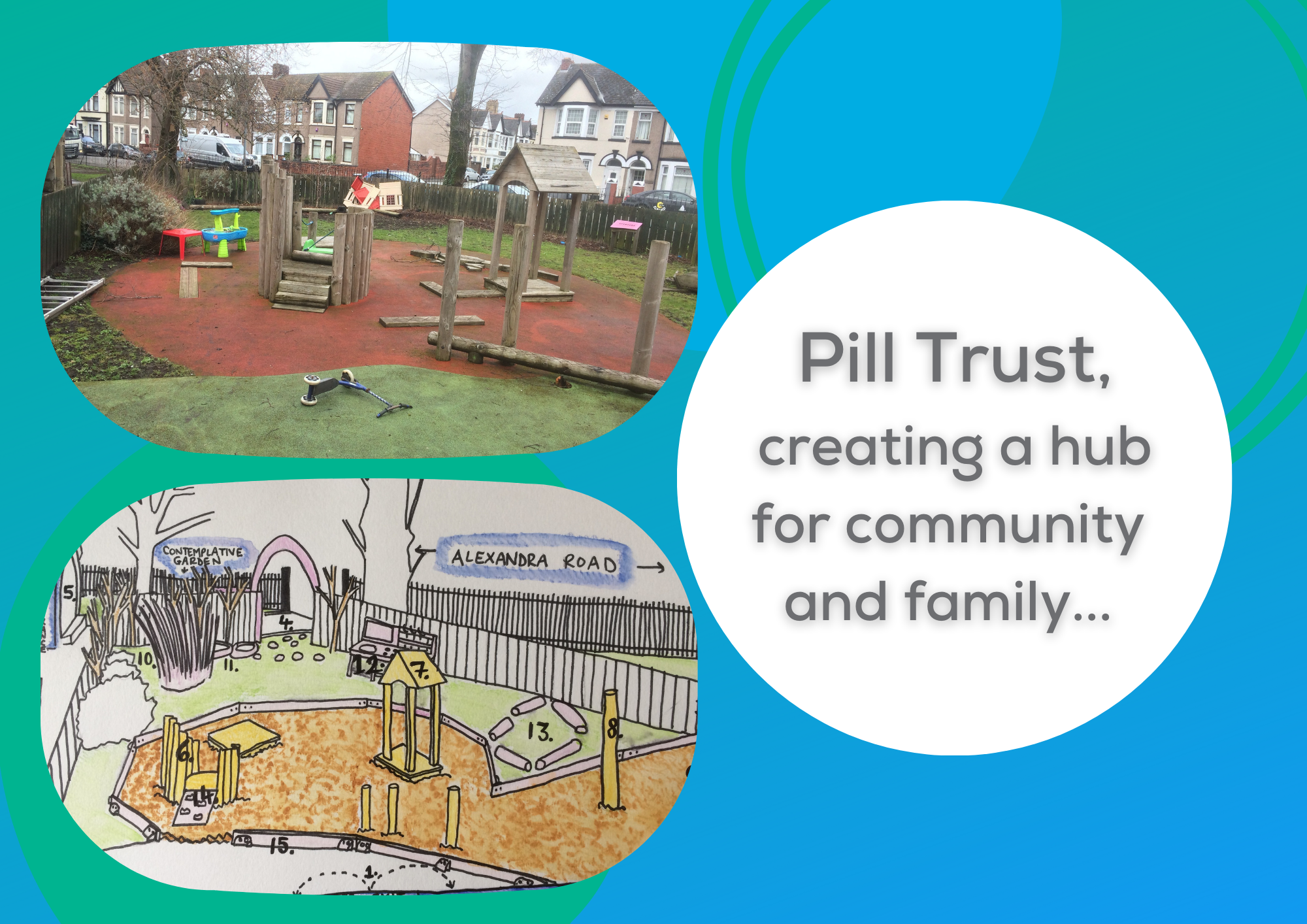RENEWABLE MAESGEIRCHEN: A COMMUNITY VISION FOR CLEAN, GREEN ENERGY
The need to tackle climate change is growing ever more urgent, and with little in the way of top-down actions by national governments helping communities switch to renewable energies, communities are finding ways to do it themselves.
In the Maesgeirchen estate on the outskirts of Bangor, resident Peter Whitby has been using his self-developed skills and knowledge to come up with ways of integrating renewable energy technology into daily life in the community. His interest in renewables came from being fascinated as a child by how everything in his grandfather’s caravanette was powered by a single solar panel on the roof: “I started looking at how it worked, and it’s actually really simple. Then I saw that you can buy broken solar panels on eBay and realised I could fix them up quite cheaply.”
When lockdown started last year, he got funding from Invest Local group MaesNi to adapt his voluntary work as MaesG’s Garden Guardian so that he could continue providing a valuable gardening service for older people in the community who were self-isolating. “I’ve made a portable power bank which is re-energised by the solar system that I’ve made, so I don’t even have to have the plug going into someone’s property to power my tools.”
He also has ideas for how renewable energies could be integrated into the wider community in visible and fun ways – one example is lighting the new park (part-funded by MaesNi) using energy harnessed from stationery bikes. Pete says, “we’ve got this amazing new park there but from 5 o’clock, it’s pitch black. Lighting it up by the kids actually powering it up, burning off excess energy to create energy – to me that just sounds perfect.”
Pete is currently working with other groups to scale up his solar panel restoration project to the community level. He has set up a deal with a solar farm company to buy their old panels at £80 a piece, and is waiting for funding to come through for this. Old panels operate at 90% efficiency, but using a clever combination of maths and kinetic energy, Pete has worked out a way to maximise efficiency: “I want to create a solar array that is going to work as a ring rather than a standard array where they all face in one direction. In the centre of that there is going to be a sculptural giant wind turbine that will reflect sun onto the panels no matter which direction they’re facing. If I get my calculations right, the wind turbine should keep that light going but also create enough power to alter and adjust the panels’ height so they captures as much sun as physically possible.”
This would allow each panel to capture up to 5 kilowatts a day, enough to power two average households. He is in conversations with local Housing Association Adra about using a piece of derelict land for this project, which combines public art and mathematical precision to generate clean energy for the community.
With so many ideas and ways to bring renewable energy into our daily lives, what are some of the barriers that stop us from implementing these solutions? Pete says that funding is the main issue – the technology has existed for years. “There are some sources of funding but it’s difficult to create something that’s new to the system.” He considers himself to be an untapped resource because he has a lot of potential that’s not getting used: he has the time, the skills, and the drive to help make Maesgeirchen a self-sufficient community, but needs to be funded in order to do this. “So I’m currently being wasted which in turn is wasting those self-sustaining resources that we have, and instead we’re still using the fossil fuels. We are unfortunately classed as one of the most poverty-stricken areas, so if we became the first area to actually become self-reliant on power, that’s going to bring us onto the map a bit more. And that doesn’t just help here, that should then give a bit of incentive to other areas and have a knock-on effect. But it all starts with that first domino that needs pushed!”
Thankfully, MaesNi is able to help with aspects of this, and the Invest Local group want to put sustainability (environmental and financial) at the heart of their new community centre. Their Community Development Worker, Jess Mead Silvester, says, “there is a really strong feeling that this is for the next generation and it needs to be sustainable, it needs to not have a massive impact on the planet. So we are looking into using sustainable building materials and powered it with renewable energy, and are getting free advice from Energy Service Wales on the best ways of doing this.”
It’s early days for MaesNi’s community energy plans, but they can take inspiration and advice from the growing number of community groups in Wales that are taking control of their energy, such as Partneriaeth Ogwen and Ynni Anafon. Community energy ownership has lots of benefits as it can allow them to reduce energy prices for residents (great for tackling winter fuel poverty) and also make money by selling extra energy to local businesses. This is a great possibility for Maesgeirchen as they have an industrial estate right next door.
Pete has dreams of powering the flats in MaesG with vertical wind turbines, which can be safer and more convenient than the large on-land and off-shore turbines you might see elsewhere. This would allow the flats to move away from using fossil fuels like gas, and in time the entire community could be powered with clean, green energy.
But in the meantime, Pete is continuing to do what he can with limited resources. He has recently started making educational activity packs that let children build their own wind turbines, with new modifications and additions week by week. Through this, he is inspiring budding engineers and showing people what can be done with the natural resources around them.
Maesgeirchen is a great example of how communities can tap into all of their resources – people power and natural power – to inspire and create change. But this kind of grassroots work also needs support and funding to scale up, giving communities the power to enact change themselves.


































